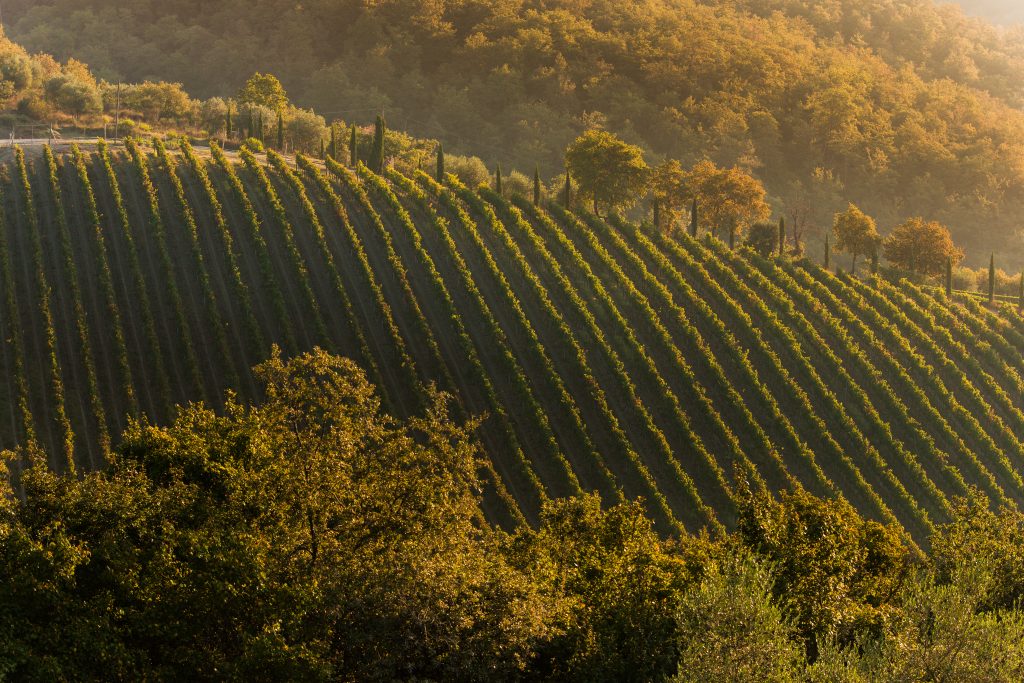Toscana – Radda in Chianti
Poggio Petroso,
Soul of Chianti
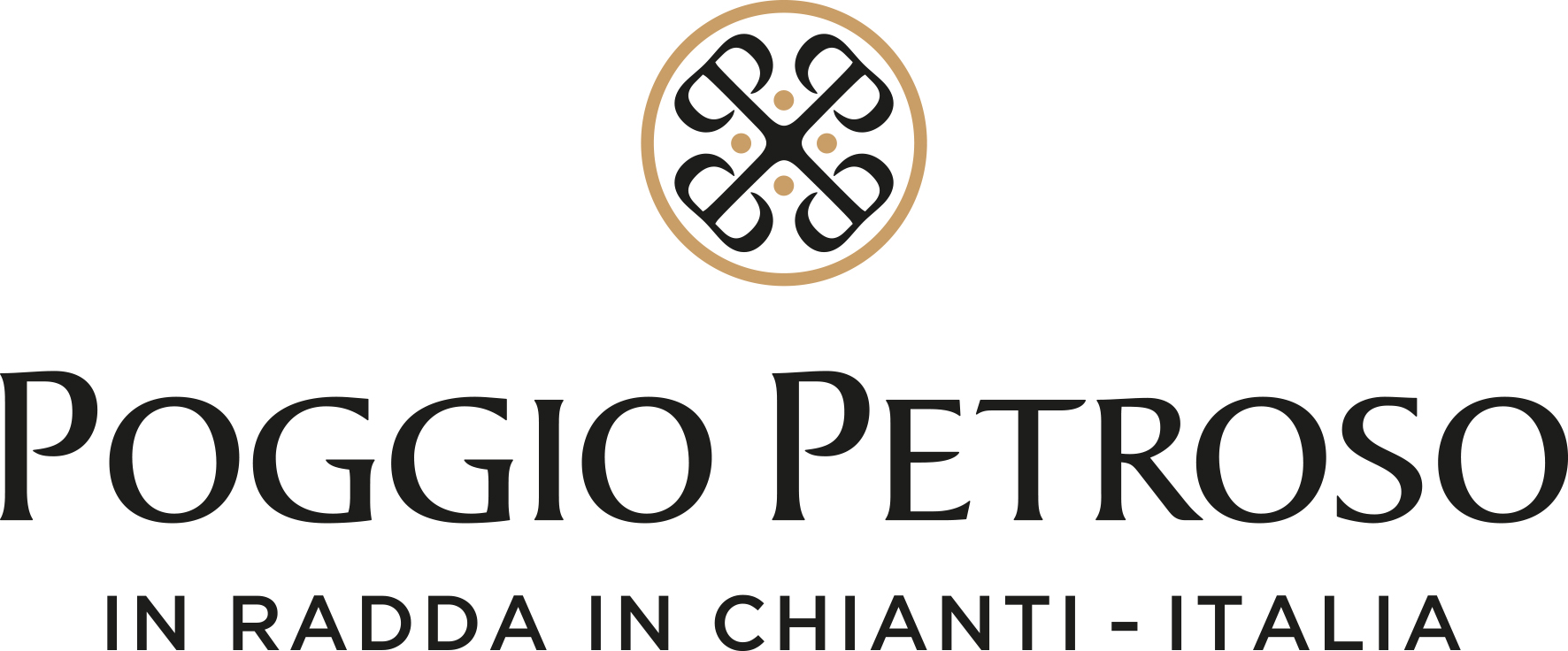
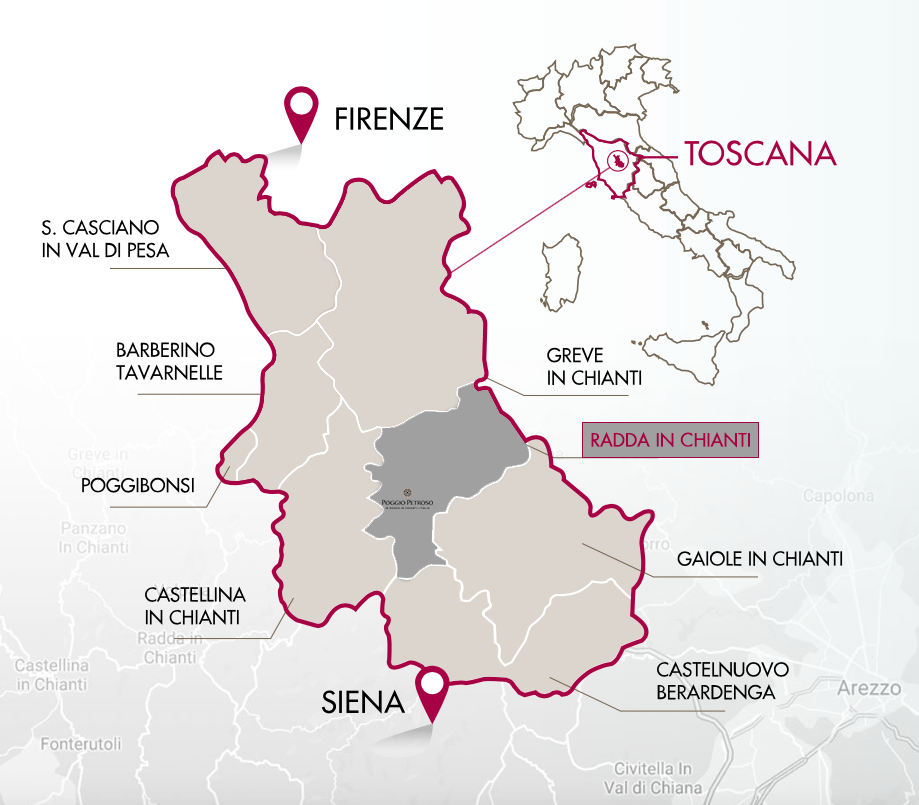
The History of Chianti Classico
Chianti Classico was born in 1716, when the Grand Duke of Tuscany Cosimo III decided to protect its name, setting the boundaries of the production area in a tender, which still correspond approximately to the current 70,000 hectares.
In 1872 Baron Ricasoli created the first blend with Sangiovese as protagonist. In the early 90s the first Consortium was created in Radda and the symbol chosen was the Black Rooster *.
1932 has been an important year because the Chianti Classico appellative was recognized for wines produced in the territory of origin; 50 years later it will obtain the DOCG designation. Towards the end of the 90s the Chianti Classico DOCG has its own disciplinary, different from that of Chianti and where Sangiovese is recognized as the prince of the territory.
Mostly covered by woods, where oak, chestnut and pine trees prevail, dotted from cypresses, Chianti Classico is a plateau with altitudes ranging between 400 and 600 meters, above the sea level. The climate is continental with moderate thermal excursions, characterized by even very low and dry temperatures in winter and hot in summers.
Sangiovese variety
Sangiovese, the main grape of the region, is a great interpreter of the unique characteristics of the land of the Black Rooster. Chianti Classico wine can be produced with Sangiovese grapes with a minimum of 80%, and a maximum contribution of 20% of other red grapes varieties. Sangiovese is the true soul of this territory with an extraordinary grape variety, exuberant and long aging wines.
Generally, it is a grape variety with good vigor and productivity. In Tuscany, in the classic areas of its cultivation, it sprouts in the first fortnight of April and matures between the end of September and the first fortnight of October.
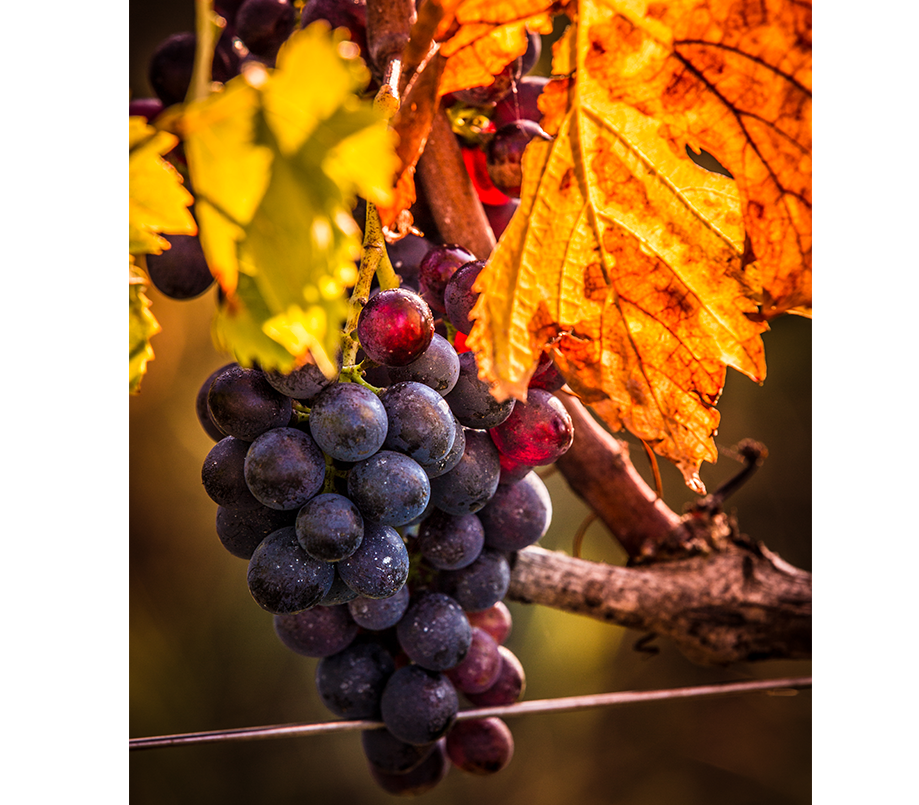
The importance to be located in Radda in Chianti
Among the various municipalities that are part of the ancient denomination of Chianti Classico, we also find the municipality of Radda in Chianti, main center of Chianti Classico.
Radda has its roots up to the ancient settlements of 2000 BC: some archaeological excavations, in fact, testify the presence of transient inhabitants, migrants, perhaps initially shepherds with their sheep who moved from green area to another, a tradition that it has been handed down until 60 years ago.
Given its prime position between Gaiole and Castellina, Radda in Chianti served as the capital of Chianti Classico, and was the medieval capital of the Chianti League.
Poggio Petroso’s vineyards are located in Radda in Chianti, in the province of Siena, specifically in the southwest of Radda in Chianti. Here the vines are located in the Colle Petroso. The first harvest of Poggio Petroso dates to 2008 in owned vineyards that are more than 25 years old.
In these areas a Sangiovese typical of the area is born and matures, reflecting the tradition and culture of the Black Rooster.*
The soil is geologically defined as a shield of clayey schists (galestri) with insertions of scaly clays alternating with alberese and fine limestone sandstones. The soil is generally shallow, recent, brown, with a structure ranging from clayey-sandy to pebbly with medium percentages of clay. The microclimate of the territory of Radda in Chianti contributes to make the Chianti Classico Poggio Petroso a structured wine, with an excellent taste balance. The climate conditions have a great temperature excursion and allow to express the full aromatic potential of the grapes. The hand harvest is fragmented: the bunches are collected from time to time only when the ripening of grapes is completed. Poggio Petroso represents a specific identity for Casa Paladin, an area of immense value and great tradition in the heart of one of the most important municipalities for Chianti Classico.
Poggio Petroso’s wines
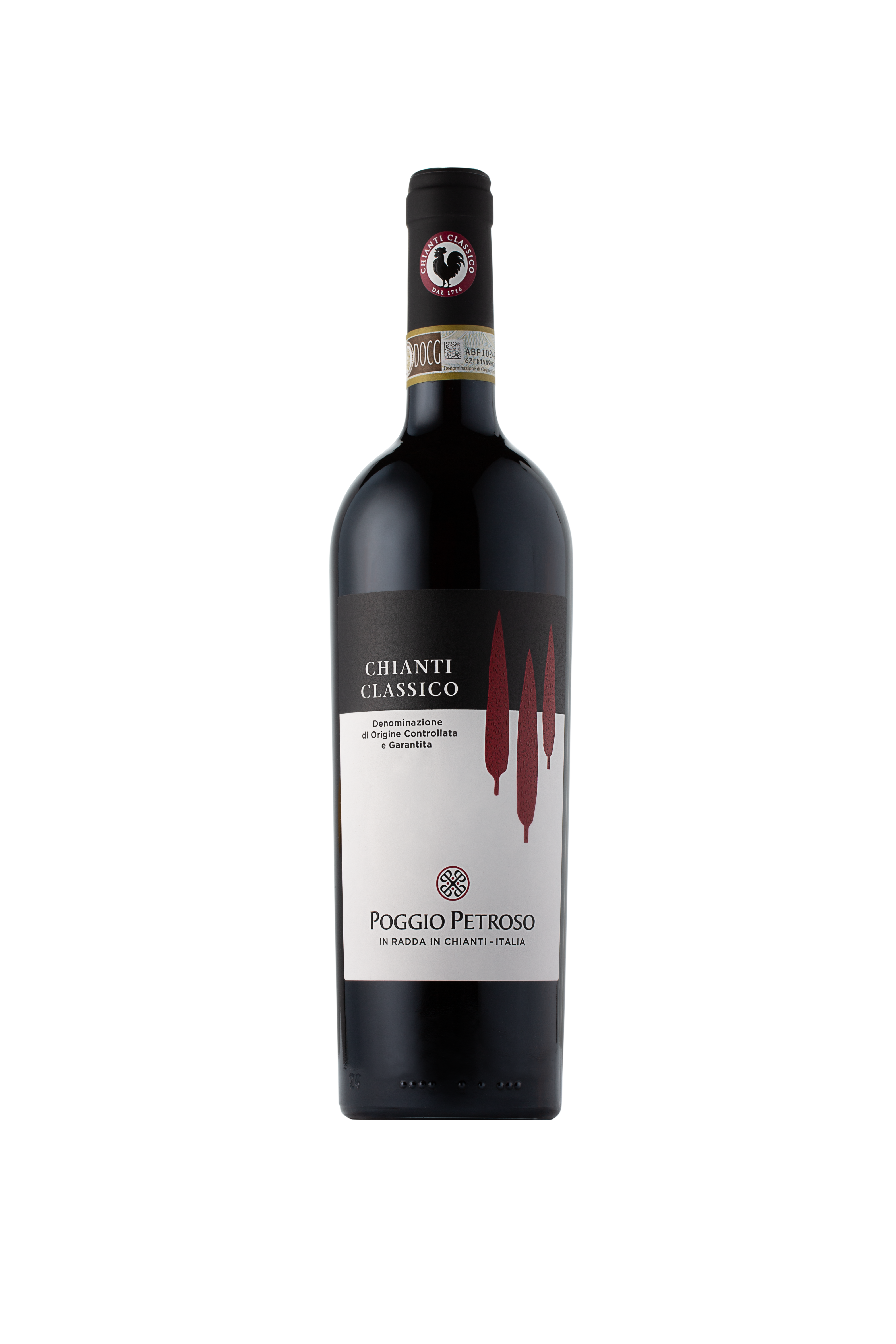
Chianti Classico Annata 2018 Docg
In Vineyard
88% sangiovese and 12% canaiolo. It is an elegant wine, which expresses the millenarian history of the terroir. The perfect sun exposure allows a perfect grape ripeness. The hand harvest takes place in October following the perfect maturity of each cru.
In Cellar
After a careful selection, the maceration takes place and it lasts for about 25 days. Then follows a period of steel-ageing in tanks and a refinement in wood for 12 months. After 8 months of bottle aging, Chianti Classico Poggio Petroso is ready for sale.
In Tasting
It has an intense ruby-red colour. The smell is fruity with notes of blueberry and cherry, floral scents of red and purple rose, with shades of spicy notes such as vanilla and black pepper.
The palate is well structured. Its freshness, expression of the acidity, produces a perfect harmony with the softness and fruity notes.
Plus
Perfect expression of elegance of the territory.
Pairings
It matches well with first courses, red meats, roasted or braised, and medium-seasoned cheeses.
Taste at 18 °C
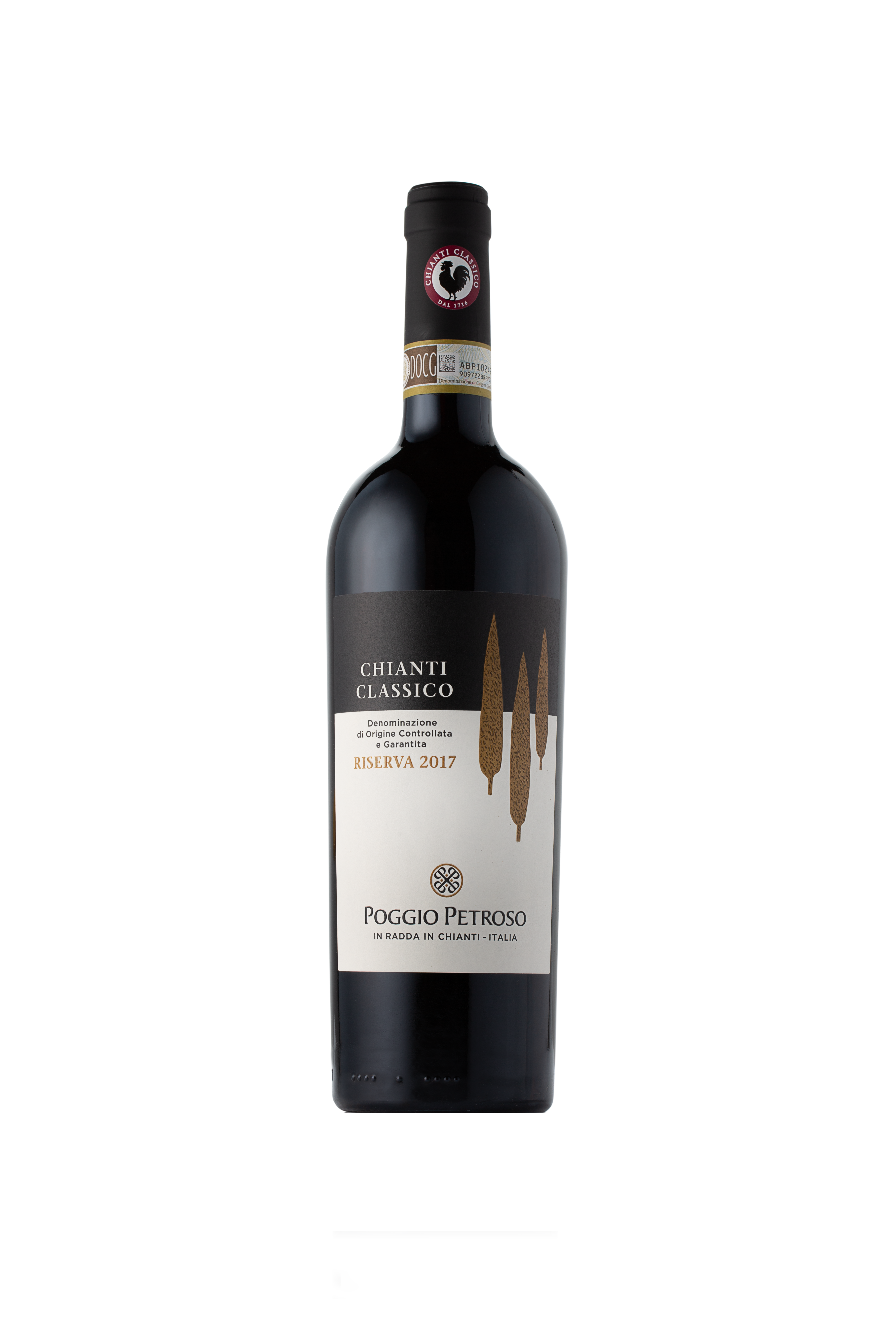
Chianti Classico Riserva 2017 Docg
In Vineyard
100% sangiovese. it is a balanced and structured wine thanks to the perfect climate condition. The climate excursion allows the best expression of the aromatic features of sangiovese. the hand harvest is fragmented following the perfect grapes maturity.
In Cellar
Immediately after the hand harvest, grapes are brought in the cellar. Alcoholic fermentation takes place approximately for 30 days in order to extract as much colour and aroma as possible. It follows an aging in barrique for 12 months. During this period the achieve softness and elegance on the palate thanks to the maturation of the tannins. Before being placed on the market, it has to underg a bottle aging for over a year, until the achievement of the right organoleptic maturity.
In Tasting
It has a ruby-red colour with light garnet shades. The nose reminds of ripe fruit such as currant, blackberry and cherry jam. Fruit are well blended with sweet spicy notes like vanilla, cinnamon and clove. On the palate, the wine is well structured, warm and elegant. It turns out to be very balanced since softness is well expressed by velvety tannins.
Plus
The aristocratic representation of chianti classico area.
Pairings
It goes well with braised red meats or game dishes, barbeque, mature cheeses and cold cuts. It is also excellent as a meditation wine.
Taste at 18 °C
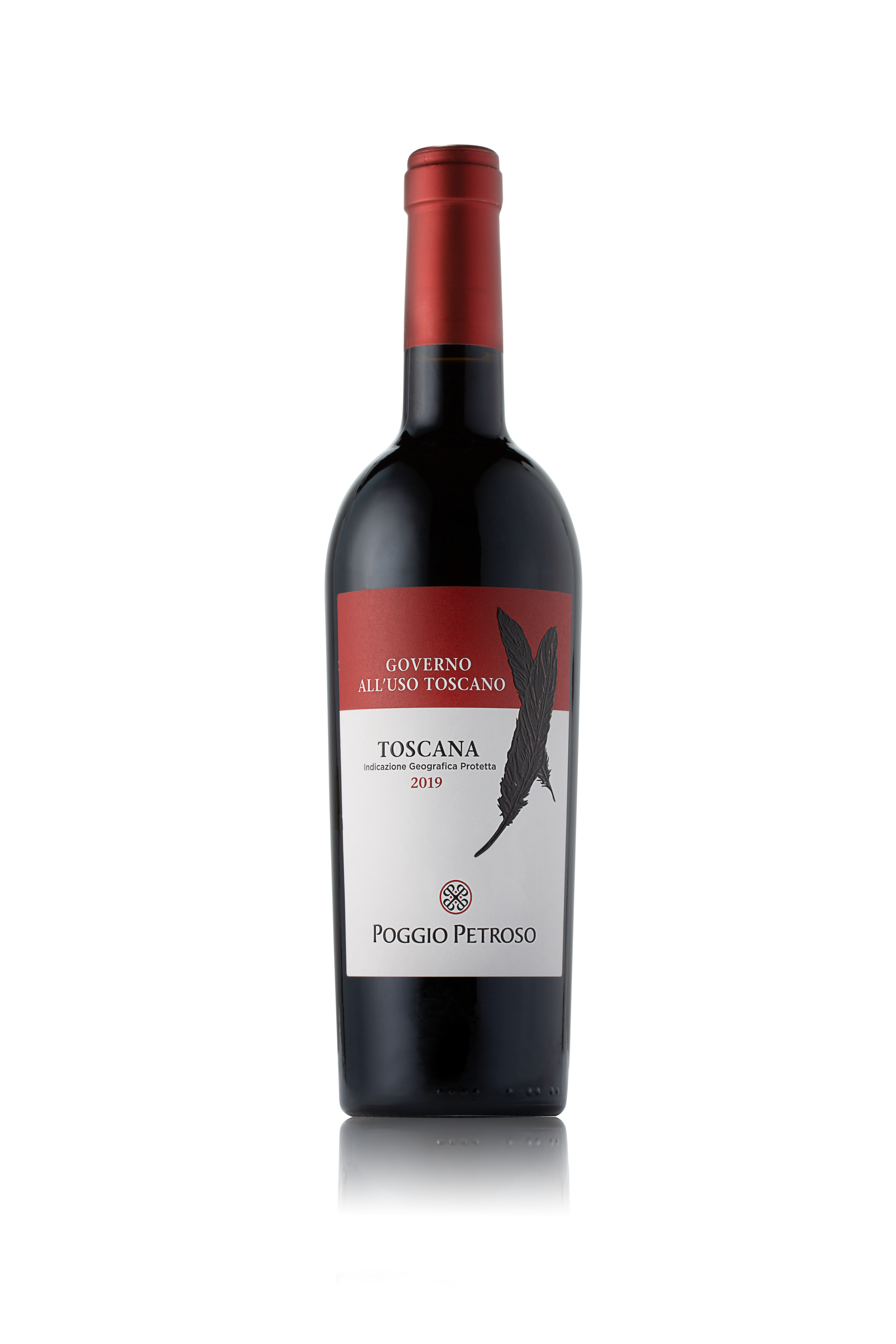
Governo all’uso Toscano
In Vineyard
Governo all’Uso Toscano is an old Tuscan technique to produce Tuscan red wine of great fruit and easy appeal. The harvest takes place in two steps: a first early selection of the best grapes of Sangiovese, which will ′′govern′′ the fermented wine, and a second harvest of Sangiovese and Syrah grapes at perfect maturation.
In Cellar
The first selection of grapes follow a drying process in specific rooms to intensify the fruity notes and the natural concentration of each grape. In the meanwhile, the second portion starts the first alcoholic fermentation, then it ages in 30 hl oak barrels, in which the malolactic fermentation occurs. In this passage the selected grapes are added to “govern” the wine, enriching it in natural sugar content, and due to this sugar concentration, a second fermentation takes place until springtime. The result is a smooth, fresh and fruity wine.
In Tasting
It has a ruby red color; in the noise it is characterized by fruity notes of cherry, currant, mixed berries marmalade and floral hints. It’s soft, elegant and well balanced thanks to the acidity degree.
Plus
It’ s the result of an ancient technique revised in a modern style.
Pairings
Wine for all meals, perfect with traditional dishes as pici with meat sauce.
Taste at 18 °C
The black rooster, the legend *
Following the legend, in the medieval period, when the Republics of Florence and Siena were fighting one against the other in order to prevail, the Chianti area was the main point of contention. To end the dispute and establish definitive borders of dominion, a very odd method was chosen. It was agreed that two knights would have been departed from their respective cities and fix the respective borders at the meeting point. The Departure would have been given by the rooster crow. The most important choice would have been the rooster. The Sieneses chose a white rooster whereas the Florentines a black one. It has been starved in a small, dark chicken coop without food for many days till the competition morning.
On the fatal day, as soon as it was released from the coop, the black starved rooster began to crow many hours before the sunrise. Its loud crowing allowed the Florentine knight to depart before the sienese counterpart. That’s why the black rooster knight won achieved the victory.





